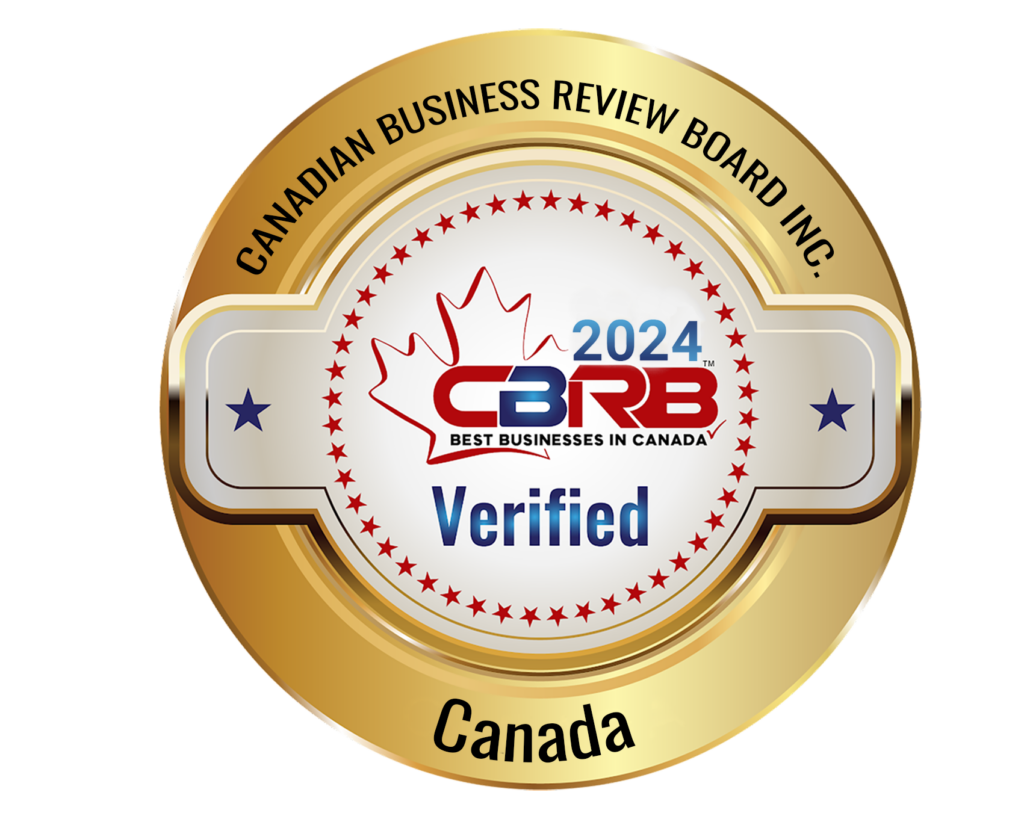Agile Transformation Strategy
Companies across industries have been concentrating on agile transformations for years in an effort to switch from rigid, slow-moving hierarchies to flexible, quick decision-making structures. These efforts were made more urgent by the COVID-19 epidemic, which necessitated an immediate need for flexibility, agility, and efficiency. Organizational decision-making rights changed and increased, and learning progressed quickly and in real time. For example, some personal support worker services company implemented agile transformation by forming cross-functional teams to quickly respond to market changes and customer needs during the pandemic. These teams were given autonomy to make decisions and adapt strategies in real time, resulting in improved customer satisfaction and business performance.
The process of converting a whole organization to an agile, responsive strategy is known as agile transformation. Agile transformation allows companies to stay nimble and adapt to changing circumstances with ease. By empowering teams to make decisions and take ownership of their work, organizations can achieve greater flexibility and responsiveness. This shift towards agility has become increasingly important in today’s fast-paced and unpredictable business environment, where the ability to adapt quickly to changes can make all the difference in staying ahead of the competition.
Agility at the corporate level essentially refers to the movement of strategy, structure, processes, people, and technology in the direction of a new operating model. All of this is accomplished by restructuring an organization around hundreds of self-directing, high-performing teams (supported by a strong backbone) and by altering the corporate culture. This shift allows companies to adapt more quickly to changes in the market and customer demands, ultimately leading to increased innovation and competitiveness. By fostering a culture of continuous learning and improvement, organizations can better navigate uncertainty and capitalize on emerging opportunities.
Agile transformation involves a complete and iterative process, where changes are made incrementally based on feedback and learning. It is thorough because it outlines the organization’s goals and establishes the systems and structures required to achieve them. It is iterative because when each component of the new operating model is implemented, the organization must test, learn from, and make corrections. For example, a software development company in the field of health technologies that embraces agile methodologies regularly gathers feedback from patients and adapts its products to meet evolving needs. This iterative approach allows the company to stay ahead of competitors and deliver innovative solutions in a rapidly changing market.
Agile Marketing and Healthcare Industry
The healthcare sector is rapidly evolving due to technological advancements, demographic shifts, and regulatory changes. In order to keep up with these changes, healthcare organizations must also embrace agile methodologies in their marketing strategies. By regularly gathering feedback from patients, healthcare providers can tailor their marketing efforts to meet the evolving needs and preferences of their target audience. This iterative approach not only allows healthcare organizations to stay ahead of competitors, but also ensures that they are delivering innovative solutions that truly resonate with their patients. The healthcare sector is changing due to factors such as advancements in technology, increased automation, globalization, aging populations, and heightened regulatory requirements. It necessitates a completely different approach to team organization and technological strategy. One of the most important themes since 2020 has been the agile transformation of the healthcare environment. The difficulty of adjusting to constant change is increasing and it necessitates a different lookout to a change in an organization. For example, a healthcare organization may need to implement agile project management methodologies to quickly adapt to shifting regulations and technologies. By creating cross-functional teams that can respond efficiently to change, the organization can stay ahead of competitors and continue delivering impactful solutions to patients.
The method to change management called “agile transformation in healthcare” enables businesses in the healthcare industry to take advantage of the responsiveness and adaptability that high-performing teams have. Employing an Agile technique can significantly improve your business, but the key is to have a skilled coach at your side who can make sure you’re prepared to benefit from it. We provide this service in addition to several forms of introductory instruction. Between employee churn, growing product selections, and rising number of patient. For example, a hospital facing challenges with high employee turnover and a need to quickly adapt to new medical technologies could benefit from implementing agile transformation. By utilizing agile methodologies, the hospital can streamline communication, increase efficiency, and ultimately deliver better care to patients. With the guidance of a skilled agile coach, the hospital can navigate these changes successfully and stay ahead in the ever-evolving healthcare industry.
Healthcare leaders can use the management tenets of agile and agile marketing as a framework for tackling a variety of management difficulties. Understanding how agile healthcare promotes communication, iteration, and innovation across healthcare teams can be helpful for current workers pursuing careers in healthcare leadership. For example, implementing agile practices in a hospital setting can involve creating cross-functional teams that include doctors, nurses, and administrators to collaborate on patient care plans in real-time. These teams can use agile methodologies such as daily stand-up meetings and sprint planning to quickly address any issues or changes in patient care, leading to improved outcomes and patient satisfaction.
In summary, Agile provides environments for both health and non-health services, with the objective to improve healthcare delivery through the integration of a variety of services, such as: ambulatory care, urgent care, procedural services, physical therapy, outpatient diagnostic services, health education and wellness. Additionally, these integrated care environments aim to provide a seamless patient experience and improve outcomes.
What is an Agile Healthcare Organization?
Agile healthcare organizations are defined as networks of teams that engage in quick cycles of learning and decision-making. These organizations prioritize flexibility, adaptability, and collaboration in order to respond efficiently to the ever-changing healthcare landscape. By utilizing agile methodologies, healthcare organizations can better navigate complex challenges, innovate more effectively, and ultimately deliver higher quality care to patients. This approach allows for continuous improvement and growth, positioning agile healthcare organizations as leaders in the industry. For example, a hospital implementing agile methodologies may form cross-functional teams to address patient care issues, such as reducing wait times in the emergency department. These teams would use rapid cycles of testing and feedback to quickly implement and iterate on solutions, leading to improved efficiency and patient satisfaction.
Agile healthcare businesses establish a shared goal and use fresh data to grant decision-making authority to the teams with the most recent knowledge. The ideal organization is agile because it can combine velocity and adaptability.
What are the Benefits of Agile Healthcare Organization
Opening lines of communication
To provide high-quality healthcare, doctors, nurses, pharmacists, specialists, and other professionals must communicate effectively with patients as well.
Agile healthcare promotes team collaboration and communication. For instance, the daily standup ritual cuts down on pointless back and forth among healthcare team members, speeding up the delivery of vital medical services and information. As a result, patients may have reduced wait times for medical attention, which, in the most extreme circumstances, may mean the difference between life and death. In this example, a patient in critical condition can receive prompt and coordinated care from various healthcare professionals thanks to efficient communication practices in an agile healthcare setting. With clearer lines of communication, medical teams can quickly assess and address the patient’s needs, potentially saving their life.
Defining precise metrics
How does a healthcare team evaluate the efficiency of its daily operations and the success of its patient-care efforts? Agile principles encourage teams to collaborate when establishing and assessing important metrics and objectives. For example, a healthcare team may set a metric to track the average time it takes to respond to emergency calls. By regularly monitoring this metric, the team can identify areas for improvement and adjust their processes to ensure prompt and effective responses to critical situations. This data-driven approach helps the team measure their success in providing timely care and continuously improve their communication practices.
Adapting to change
Teams in the healthcare industry may be flexible and adaptable thanks to agile, which helps them deliver high-quality patient results. For instance, primary care teams at Brigham and Women’s Hospital in Boston successfully redesigned patients’ annual wellness visits using agile concepts.
The clinic put together a team with an emphasis on duties rather than roles, allowing each team member to offer their special talents and perspectives. Teammates were able to learn from one another, utilise and formalize domain-specific knowledge, and develop institutional memory through the agile approach.
For instance, a family practice healthcare team may decide to begin tracking and measuring the amount of time that passes from the moment a patient is admitted and the time they speak with their primary care physician. Teams can define such goals using sprint planning, track their progress, ask patients for feedback, and modify their goals as needed after each sprint.
Innovating in healthcare
The healthcare industry is rapidly evolving, allowing patients and healthcare providers to communicate digitally and in new, accessible ways.
Best-practice techniques should be used by healthcare management to give patients state-of-the-art care. Agile gives healthcare teams the ability to swiftly identify and solve issues with patient care, acquiring medical supplies, staffing, and a variety of other duties involved in providing healthcare. For example, a healthcare team using agile methodology may set a goal to improve patient satisfaction with wait times in the emergency department. They would create a plan to streamline processes, regularly check patient feedback, and make adjustments to continuously improve the patient experience. This agile approach allows the team to quickly address any issues that arise and ultimately provide more efficient and effective care to their patients.
Agile Marketing Plan for the Healthcare Businesses
Agile Healthcare marketers must evaluate vast amounts of data and react accordingly in order to meet the constantly shifting, extremely demanding customer demands. However, isolated data systems only offer a fragmented view and limited decision-making. To provide a responsive, optimized approach for the hospital context, the ability to continuously adjust agile marketing plans is essential.
Healthcare Agile marketing is a form of marketing that makes use of agile methodologies’ guiding ideas and procedures in the healthcare settings. Self-organizing, cross-functional teams that operate in regular iterations with continuous feedback are examples of this. For example, a hospital may use agile marketing to quickly adapt their advertising campaigns based on real-time patient feedback and market trends. By using agile methodologies, the hospital can ensure that their marketing efforts promptly adapt to meet the changing needs of patients and the dynamic healthcare industry.
Teams finish their stated deliverables before the end of each burst, also known as a “sprint” or “iteration,” and start testing so they may learn how to get better during the following one. Teams are able to gradually adjust and improve the results over time thanks to data collecting and analytics. However, in a scenario where the hospital relies solely on patient feedback without considering wider market trends, they may miss out on reaching potential patients who are not directly providing feedback. Additionally, if the hospital only focuses on short bursts of marketing campaigns without a long-term strategy, they may struggle to build brand loyalty and sustainable growth in the competitive healthcare industry.
Growth Hacking and Healthcare Businesses
You can avoid being a one-day hacker by setting up the proper procedure for your agile marketing team, which will help you become a master of growth instead. Marketers can apply an Agile approach for their growth process and ultimately spend less to reach their goals by using it, just way software businesses employ agile principles to produce products. We are glad to provide some insights that you may utilize with your team as you implement the Agile marketing strategy.
Many marketers have tried to “hack” growth as a result of the growing popularity of the practice in recent years, particularly those who are just starting out in this field. It’s true that in a single month, you may do an Internet search, compile a collection of random “hacks,” and prepare 100 experiments. Then, you can just cross your fingers and hope for the best. Some of these might even be effective! However, the goal should be to offer the appropriate product to the right audience at the right time and place, not to use as many hacks as possible. Quality over quantity is key when it comes to growth hacking. It’s important to focus on creating a solid foundation for your marketing strategy, rather than relying solely on quick fixes and shortcuts. Understanding your target audience and consistently delivering value to them is essential for achieving sustainable growth in the long term. So, instead of chasing after every hack out there, take the time to develop a comprehensive and thoughtful approach that will yield lasting results.
Ready to transform your healthcare organization and stay ahead of the competition? Contact Dana PharMed today and discover how our Agile Transformation services can help you navigate change, enhance efficiency, and deliver exceptional patient care. Let’s innovate and grow together.
Reach out to us now to schedule a consultation and start your journey towards agility and excellence!











